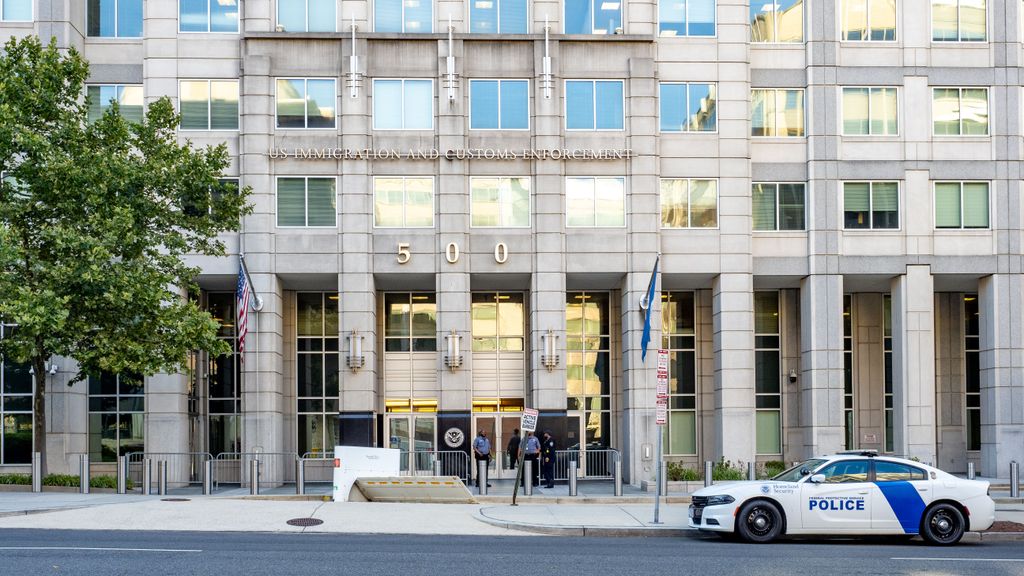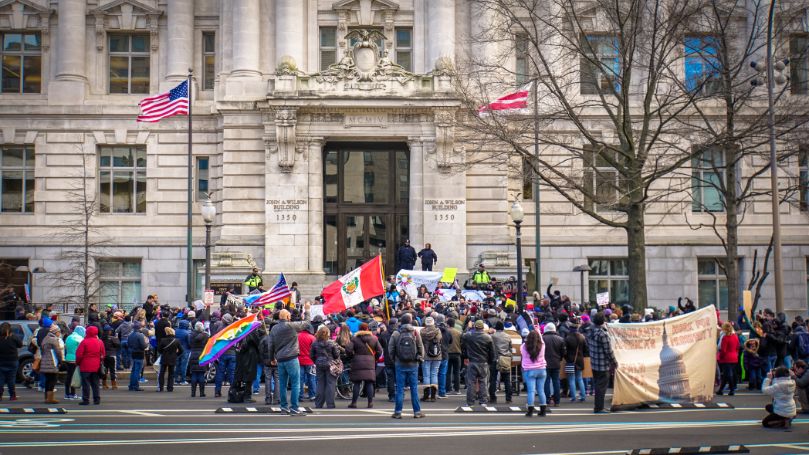
In the fertile valleys of The Dalles, Oregon, an unsettling sight unfolds across Ian Chandler’s cherry orchards. Branches, once promising a vibrant harvest, now hang heavy with fruit described as “mummified” – dark, shriveled, and tragically unpicked. This year, the anticipated sweetness for markets and processing, destined to garnish Shirley Temple mocktails, remains on the trees, a stark testament to a profound disruption in America’s agricultural backbone.
Chandler, a seasoned farmer with CE Farm Management in Wasco County, faces the loss of almost a quarter of his 125 acres of cherry trees. This isn’t a story of adverse weather or disease; it’s a direct consequence of a vanished workforce. He ruefully notes that “What you’re going to see is a bunch of fat, happy raccoons this winter,” highlighting the quarter-million to three-hundred-thousand-dollar revenue that will simply rot.
For years, Chandler had cultivated a loyal seasonal workforce, individuals who returned annually, maintaining connections with birth announcements and Christmas cards. Yet, this season, half of them did not arrive. His neighbors, too, found themselves scrambling for pickers, revealing a systemic issue far beyond a single farm.
“The beginning of the season coincided, unfortunately, with a lot of really strong immigration enforcement down in southern California, where our workforce comes from, and that had a chilling effect on people wanting to move,” Chandler explained. His pickers, predominantly Latinos, traditionally follow the harvest cycles across the western and northwestern United States.

However, a surge in raids by Immigration and Customs Enforcement (ICE) on cities and workplaces, alongside detentions and deportations, has ensnared many individuals, even those with no criminal records. This heightened enforcement has instilled widespread fear, leading to a dramatic drop-off in available labor for industries heavily reliant on seasonal workers. Chandler’s long-standing workforce, despite their annual commitment, now fears travel, preferring to stay put.
This localized crisis in Oregon mirrors a broader national trend. The U.S. Department of Agriculture estimates that a significant 42% of hired crop farmworkers are undocumented immigrants, meaning they lack authorization to work. Another 26% are immigrants who have either become citizens or permanent residents.
Such shifts in immigration policy have tangible economic consequences. Since April, 1.4 million people have exited the U.S. labor force, with 802,000 of them being foreign-born. While farmworkers are not explicitly tracked in monthly jobs reports, analysts widely agree that current immigration policies are having a widespread impact across the nation’s labor sectors.
Addressing this critical issue, President Donald Trump, in a phone interview with CNBC, stated, “I take care of the farmers. I love the farmers. They’re a very important part of this country, and we don’t want to do anything to hurt the farmers.” While Vice President JD Vance has suggested automation as a solution, it offers little immediate relief for farmers like Chandler.

Chandler’s cherry farm, for instance, cannot simply be mechanized. He firmly believes that cherries are best harvested by hand, particularly by experienced pickers who understand how to avoid damaging next year’s budding crop. Despite efforts to hire locally, Chandler observes that Oregonians, whether students on summer break or adults seeking full-time employment, tend to last only in non-picking roles, such as scanning produce buckets or driving tractors.
“You do not find people who are normally born here in the United States, unless they’re children of immigrants who are already doing this work, who want to work in this kind of industry,” he asserts, reflecting on his decades in the cherry industry. “It just doesn’t exist.” It’s important to note that Chandler ensures everyone he hires provides identification and work authorization, leaving him unaware of who may be in the country illegally, relying on established relationships and recommendations to build his workforce.
This unfolding scenario highlights the profound implications of recent changes to deportation rules, which in 2025, ushered in a new era of immigration enforcement. These updates prioritize stricter measures, faster processing, and significant shifts in eligibility for remaining in the United States. The overarching design of these new rules is to accelerate removals and reduce opportunities for undocumented immigrants and those with weak legal defenses to delay or challenge their deportation.
Under these intensified regulations, individuals with recent convictions for violent crimes, drug offenses, or gang ties are now top priorities for deportation, even if they have resided in the United States for many years. Asylum seekers face stricter guidelines, with new requirements making it more challenging to qualify for protection, often leading to expedited removal if their claims are denied.

Furthermore, an expanded expedited removal policy now allows for the deportation of anyone who cannot prove U.S. residency for at least two years, without the necessity of a court hearing. In Texas, particularly in major cities like Dallas and Houston, immigration officers have significantly ramped up enforcement efforts, leading to an increase in stops and detentions within the state. These changes collectively aim to move faster and offer fewer options for recourse.
Understanding who is most susceptible to these updated rules is critical for those residing in the United States without permanent legal status. Undocumented immigrants, especially those unable to prove over two years of U.S. residency, face a heightened risk of expedited removal. Individuals with past criminal records, even those dating back years, could now find themselves in deportation proceedings. Asylum seekers with weak claims or incomplete paperwork are also more likely to face rapid rejection and deportation.
Mixed-status families, where some members are undocumented while others are U.S. citizens, are particularly vulnerable, as the undocumented individuals may be at risk. Even holders of Temporary Protected Status (TPS) and Deferred Action for Childhood Arrivals (DACA) are advised to monitor updates closely, as their program statuses remain subject to change, creating ongoing uncertainty for these communities, particularly where large immigrant populations reside.

The current enforcement environment marks a distinct departure from previous years. Earlier, immigration officers often had more discretion, and individuals typically had more time to appear in court or request delays. Now, the emphasis is on accelerated processing and limiting officer flexibility, resulting in less time to prepare or seek legal relief. This translates to fewer protections at the border and during the deportation process itself, leading to faster deportations, even for those deeply rooted in their communities for many years. The shift means faster arrests, fewer court dates, and a substantially higher risk of deportation occurring without prior warning.
Deportation, formally known as removal, is defined by the U.S. government as “The removal or return of a noncitizen from the United States.” According to the Department of Homeland Security (DHS), a deportable person includes a “noncitizen in and/or admitted to the United States that is subject to a ground(s) of removal specified in section 237 of the Immigration and Nationality Act (INA).” Its fundamental purpose, as outlined by USA.gov, is to ensure national laws and borders are respected by removing non-citizens who commit crimes, pose a threat to public safety, or violate immigration laws.
The process of deportation is described as cumbersome, often involving an arrest, detention, a removal order from a judge, and ultimately a flight out of the U.S., a journey that can span months or even years. Kathleen Bush-Joseph, a lawyer and policy analyst with the U.S. Immigration Policy Program at the Migration Policy Institute, a nonpartisan think tank, notes that “Each of those pieces can be extremely difficult and complicated depending on where someone is, who they are, what types of protection claims they might have, what types of resources the U.S. government has.”
Identifying who is removable is the initial step in this complex process. Individuals without legal status—those who may have entered the country illegally, overstayed a work or student visa, or violated the terms of their green card, potentially through committing a crime—are at risk. Importantly, federal law officials are not required to prove someone committed a crime to deport them, as evidenced by recent cases of revoked student visas. Policies such as the ending of Temporary Protected Status for Haitians and Venezuelans, and the cessation of a humanitarian program for Cubans, Haitians, Nicaraguans, and Venezuelans, further swell the ranks of those vulnerable to removal, even though pending litigation has paused some of these plans.

The second step involves arrests, often driven by aggressive quotas. ICE officers, for instance, were assigned a quota of 75 arrests per day for each of their 20 field offices. While federal agencies like the FBI, U.S. Marshals Service, and Drug Enforcement Administration now assist in investigations and arrests, “at-large arrests” directly by federal agents constituted only 29% of all ICE arrests in fiscal year 2024. The majority typically stem from local law enforcement, through programs like the Criminal Alien Program, which transfers individuals from local jails to ICE custody, and Section 287(g) agreements, which empower local police to conduct limited immigration law enforcement.
Immigration detention can occur at any point from arrest to a final court decision, with costs varying significantly, and the government utilizing contracts with private prison operators to expand capacity. Alternatives such as ankle monitors and regular check-ins with ICE are also employed. A critical point is that a failure to appear for a notice, whether ignored or missed due to filing glitches, often results in a final order of removal. Additionally, strategies like “expedited removal” for those in the country for under two years without legal status, and the controversial “Alien Enemies Act,” have been used to bypass standard court processes.
The immigration court system, managed by the Executive Office for Immigration Review within the Justice Department, is deeply overwhelmed. As of the last quarter of 2024, it was grappling with over 4 million pending cases. Bush-Joseph observes that “People referred to the immigration courts might end up waiting years before they have a hearing determining their case,” noting that asylum cases, due to their complex nature, can take even longer.
During court proceedings, if a person is found “removable as charged” by a judge, it initiates the subsequent stages of the deportation process, though it is not yet a final order of removal. John Conrace, an immigration attorney in Mississippi, explains, “It’s just like any other form of litigation. You can say ‘I deny that’ and the government has to prove that you are removable.” He also highlights that “People who get orders of removal, those are often generated because they are afraid to go to their initial hearing.” While individuals have the right to seek legal representation, most do not have lawyers.

Legal strategies often hinge on the length of time an individual has resided in the U.S. Those present for less than one year may potentially claim asylum. For those with over 10 years of presence, avoiding final removal is sometimes possible if they can prove “extreme hardship” to a qualifying U.S. citizen or lawful permanent resident relative, although this is a difficult claim to win and does not necessarily grant a pathway to legal status. Individuals present between one and 10 years may pursue other claims, such as risk of persecution or humanitarian relief, as exemplified by the case of Kilmar Armando Abrego Garcia, an El Salvador immigrant who staved off deportation by arguing he would be persecuted by gangs, and was even mistakenly deported and later ordered brought back.
The final step is removal. If all claims to prevent deportation fail, the judge issues a final order of removal, which is appealable. Alternatively, individuals can choose to “voluntarily depart,” which is not a formal deportation and avoids a negative mark on their future immigration record. Appeals of removal orders are filed with the Board of Immigration Appeals (BIA) and, in rare instances, can reach federal circuit courts and even the Supreme Court. Conrace notes that “That takes a wildly varied amount of time. If you are not detained and you are free, it could be years before the BIA gets to resolving the issue that was appealed.” In fiscal year 2024, immigration courts issued 666,177 initial case decisions, with the majority being removal orders.
The scale of the backlog is immense; as of the last quarter of 2024, there were 1.5 million pending asylum cases in immigration courts and an additional 1 million with U.S. Citizenship and Immigration Services. Bush-Joseph emphasizes that “The current pace of work means that it would take a lot more resources, a lot more immigration judges and asylum officers, to be trying to work through these applications at a faster pace than is currently happening.” Furthermore, approximately 1.4 million people have pending deportation orders, but sending many back to their home countries faces challenges, primarily due to home countries not agreeing to accept them. While the Biden administration carried out deportations to 192 countries last fiscal year, the Trump administration aims to establish more “third-party countries” for deportee resettlement.
The financial cost of deportation varies widely based on where someone is apprehended, the duration of their detention, and the length of their legal battle. The DHS budget allocates $8 billion for ICE, $20 billion for Customs and Border Protection, and $865 million for U.S. Citizenship and Immigration Services (funded by application fees), though not all this funding goes solely to immigration law enforcement. Bush-Joseph concludes that “Overall, the U.S. immigration system remains extremely overwhelmed, under-resourced and outdated.” She stresses that “It’s going to take congressional action to really update and reform the system and bring it into the 21st century to meet modern migration challenges.”

Despite the clear need, meaningful reform has proven elusive, with decades of bipartisan efforts failing to pass Congress. A promising bipartisan deal, forged after months of careful negotiation early last year, collapsed within a day of its public release, largely due to then-candidate Trump’s pressure on Republicans to oppose the deal, intending to keep border security as a pivotal issue in the presidential election. Now, the administration hopes Congress will provide $175 billion for border security through the budget reconciliation process later this year.
The legal grounds for deportation are primarily outlined in the Immigration and Nationality Act (INA), specifically INA § 237. Non-citizens may face removal for various reasons, including criminal offenses such as aggravated felonies, crimes involving moral turpitude, drug offenses, and firearms offenses. Immigration violations like overstaying a visa, being inadmissible at entry or adjustment of status, engaging in marriage fraud, or committing document fraud also frequently lead to deportation. Additionally, activities deemed a threat to national security or becoming a public charge (dependent on public assistance), can serve as a basis for removal.
For those caught in the deportation process, several legal avenues, or forms of relief from removal, may be available. Cancellation of Removal, outlined in INA § 240A, offers two paths: one for Lawful Permanent Residents (LPRs) with specific residency periods and no aggravated felony convictions, and another for non-LPRs requiring continuous physical presence, good moral character, and proof of “exceptional and extremely unusual hardship” to a qualifying U.S. citizen or LPR relative. Protection from Harm is another critical category, encompassing asylum (INA § 208) for those fearing persecution, withholding of removal (INA § 241) to prevent removal to a country where life or freedom would be threatened, and relief under the Convention Against Torture (CAT) (8 CFR § 208) for individuals facing likely torture upon return.

Adjustment of Status, under INA § 245, allows certain non-citizens to gain lawful permanent resident status without leaving the U.S., typically if they qualify for a green card through family or employment petitions. Furthermore, various waivers exist to overcome specific grounds of inadmissibility or deportability, allowing individuals to address past issues that might otherwise prevent them from obtaining a visa, adjusting status, or even seeking permission to return to the U.S. after a previous removal.
However, a deportation order carries severe, lasting consequences. Individuals removed from the United States are typically barred from legally re-entering for periods of five, 10, or 20 years, or even permanently, depending on the reason for deportation and the number of prior removals, as detailed in INA § 212. Attempting to re-enter the U.S. unlawfully after deportation can lead to significant penalties, including criminal charges, substantial fines, and lengthy prison sentences. Moreover, if an individual who was previously removed unlawfully re-enters, their prior removal order can be reinstated, allowing for immediate re-deportation without new immigration court proceedings, a process designed to streamline removals for those violating re-entry bars.
For individuals navigating the daunting landscape of deportation proceedings, understanding one’s rights and available options is paramount. While there is no legal requirement to have a lawyer, immigration law is notoriously intricate, and studies consistently show that individuals with legal representation are far more likely to succeed in their cases. A skilled deportation defense attorney can meticulously prepare and file relief applications, argue cases effectively in court, assist in securing bond for release from detention, ensure crucial deadlines are not missed, and provide essential emotional support throughout what is undoubtedly a deeply stressful process.

As the cherries rot in Oregon and the human stories behind the statistics become increasingly visible, the profound impact of evolving deportation policies on American agriculture, labor, and families cannot be overstated. The economic losses for farmers like Ian Chandler are just one facet of a much larger, complex challenge that demands clear understanding and informed engagement. The shifting sands of immigration enforcement continue to reshape communities and industries, underscoring the vital need for comprehensive reform and effective legal guidance in these turbulent times.



:max_bytes(150000):strip_icc()/TAL-google-flights-logo-smartphone-GOOGLEFLY0323-60b7455194194149aaec8ca3af3d5c3a.jpg)